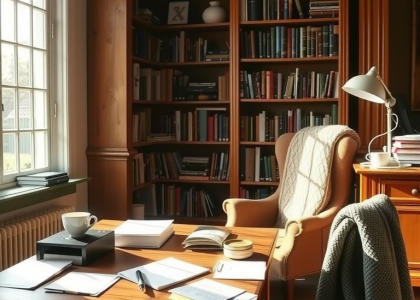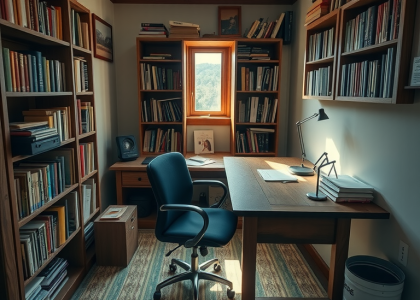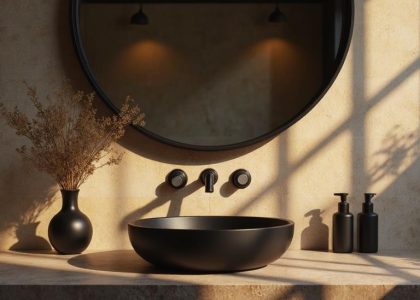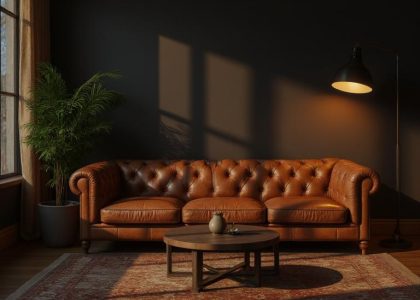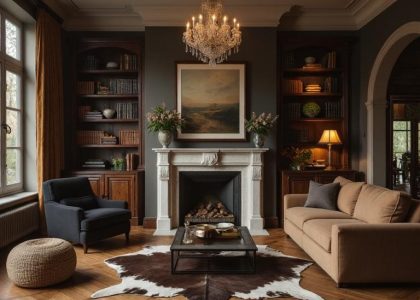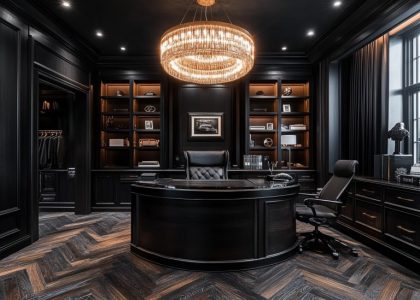What Are the Key Principles for Mixing Decor Styles?

Blending modern and vintage decor styles can create a unique and inviting atmosphere in your home. Here are some foundational principles to guide you in achieving a harmonious mix:
- Balance: Achieve harmony by thoughtfully combining elements from both styles, ensuring neither dominates the space. For instance, pairing a sleek modern sofa with a vintage coffee table can create visual interest without overwhelming the room.
- Proportion and Scale: Maintain appropriate sizes and relationships between pieces to prevent one style from overpowering the other. When integrating a large vintage armoire, complement it with modern, streamlined furniture to maintain equilibrium.
- Cohesion: Use a consistent color palette and complementary materials to unify diverse elements. Starting with a neutral base allows modern and vintage pieces to shine without clashing, enhancing the overall aesthetic.
- Layering Textures and Patterns: Incorporate a variety of textures and patterns to add depth and interest. Mixing large-scale vintage floral prints with smaller modern geometric patterns creates a dynamic look without sacrificing cohesiveness.
- Embracing Imperfections: Accept the unique characteristics of vintage items, such as patina and wear, which add authenticity and warmth to the space. These features can serve as conversation starters and enhance the character of your home.
- Personalization: Reflect your individual style by thoughtfully selecting pieces that resonate with you, ensuring the space feels authentic and comfortable.
By applying these principles creatively, you can enhance the aesthetic of your home while transcending the limitations of singular design styles. 🛋️
*As an Amazon Associate I earn from qualifying purchases
How to Choose a Cohesive Color Palette?

Creating a cohesive color palette is essential when blending modern and vintage decor styles. Here are some strategies to ensure a unified look throughout your space:
- Start with a Neutral Base: Use shades like beige, gray, or white as a timeless backdrop. This neutral foundation allows both modern and vintage elements to stand out without clashing.
- Incorporate Era-Specific Colors: Adding character and nostalgia with specific era colors can breathe life into your space. Earthy tones like olive green and burnt orange from the 1970s or pastel hues such as mint green and blush pink from the 1920s are excellent choices for infusing vintage charm.
- Apply the 60-30-10 Rule: Balance your colors by dedicating 60% of your room to the dominant color, 30% to a secondary color, and 10% for an accent color. This structured approach ensures harmony while allowing for creativity.
- Ensure Complementary Colors: Choose colors that harmonize. This can be achieved by selecting adjacent hues on the color wheel or opting for contrasting colors that work together. A chart depicting color relationships can be beneficial:
| Color Relationship | Description | Example |
|---|---|---|
| Analogous | Colors that are next to each other on the color wheel. | Blue, Blue-Green, Green |
| Complementary | Colors directly opposite each other on the color wheel. | Blue and Orange |
- Consider Furniture Scale: Make sure that your furniture pieces are proportionate to the room size and each other. Maintaining visual balance is critical to avoid any piece from dominating the decor.
- Repeat Shapes and Patterns: Use recurring shapes and patterns throughout your selection to tie various elements together. This repetition creates a cohesive and aesthetically pleasing environment.
- Strategically Place Bold Colors: Introducing bold colors as accents can provide focal points that break monotony without overwhelming the ambiance.
By thoughtfully selecting and balancing colors, you can seamlessly blend modern and vintage styles, creating a space that is both stylish and harmonious. 🎨
*As an Amazon Associate I earn from qualifying purchases
What Furniture Pieces Bridge the Gap Between Styles?

When blending modern and vintage decor, thoughtful selection of furniture that complements both styles is essential. Here are some versatile pieces that can enhance your mixed decor setting:
- Sleek Sofas: Choose modern sofas with clean lines and minimalistic designs to pair effortlessly with vintage elements. A curved sofa can provide both comfort and style, creating a seamless transition between eras.
- Mid-Century Credenzas: These storage units not only add a touch of vintage charm but also serve as functional focal points. Pair them with minimalist artwork to maintain continuity in style.
- Vintage Rugs: Layering vintage rugs under modern furniture contributes warmth and character. A Persian rug, for instance, can contrast beautifully with a minimalist jute rug, adding intrigue through texture.
- Statement Lighting: Integrate unique vintage lighting fixtures, such as geometric table lamps, to bring a timeless element into modern interiors. These choices can serve as eye-catching accents that unify the overall space.
- Accent Chairs: Pair a modern sofa with a vintage armchair to forge a dynamic and inviting seating area. The contrast between different styles adds both visual interest and balance to the room.
Additionally, consider how furniture placement affects the flow of the space:
| Area | Preferred Furniture Style | Placement Strategy |
|---|---|---|
| Living Room | Modern Sofa with Vintage Chairs | Arrange for conversation focus, allowing easy movement. |
| Dining Area | Rustic Vintage Table with Modern Chairs | Ensure visual connection with adjacent spaces through color consistency. |
By thoughtfully selecting pieces that bridge the gap, you can create a cohesive and stylish environment that honors both modern and vintage aesthetics. 🛋️
*As an Amazon Associate I earn from qualifying purchases
How to Use Accessories to Enhance Your Decor?

Incorporating accessories is a powerful way to blend modern and vintage decor styles, adding character while maintaining a cohesive look. Here are some practical tips to achieve this balance:
- Curate a Cohesive Color Palette: Start with neutral tones and add bold accents that reflect both styles to unify diverse elements. This ensures modern and vintage accessories blend seamlessly without clashing.
- Layer Textures and Patterns: Combine different materials, such as soft fabrics like velvet with harder materials like metal and wood. This combination adds depth and visual interest, creating a vibrant yet harmonious environment.
- Mix and Match Accessories: Pair antique vases with modern sculptures to derive an eclectic aesthetic. Thoughtful combinations of different eras enhance decor without overwhelming the space.
- Incorporate Statement Lighting: Use lighting fixtures from various eras, like vintage chandeliers or mid-century lamps, that serve both functional and artistic purposes. These pieces can complement your overall theme while providing illumination.
- Repurpose Vintage Items: Unique vintage items can hold character and charm. For instance, using an antique trunk as a coffee table offers both functionality and aesthetic appeal.
Pay close attention to arrangement:
- ✅ Group accessories by color or theme to create visual focal points.
- ✅ Mix heights and sizes to add dynamic interest.
- ✅ Rotate accessories seasonally to keep decor fresh and engaging.
By thoughtfully selecting and arranging accessories, you can craft a harmonious blend of modern and vintage elements, enhancing your home’s decor with style and personality. 🛋️
*As an Amazon Associate I earn from qualifying purchases
What Common Mistakes Should You Avoid?
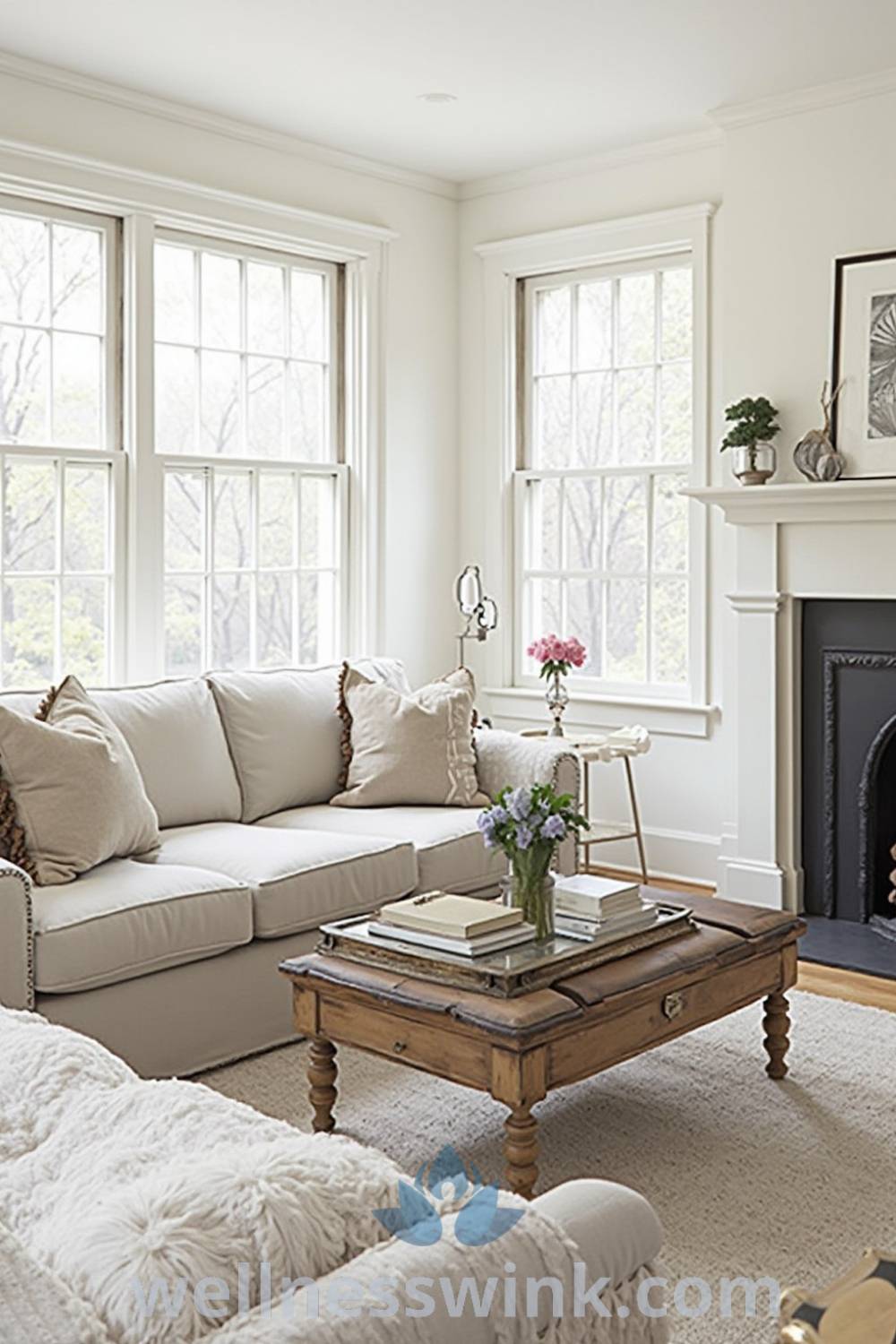
Blending modern and vintage decor can yield a stunning and unique space, but it’s important to steer clear of common pitfalls to maintain a cohesive look. Here are some mistakes to avoid:
- Avoid Overcrowding: Filling a room with too many pieces from either style can lead to visual clutter. Instead, select standout items from each style to serve as focal points, ensuring the space feels intentional.
- Be Mindful of Color Choices: Using too many contrasting colors can create chaos. A neutral backdrop allows both modern and vintage pieces to harmonize and stand out, enhancing visual appeal.
- Balance Proportions: Mismatched proportions, such as bulky vintage items paired with sleek modern pieces, can disrupt visual harmony. Ensure that furniture proportions work well together for an inviting space.
- Check Condition and Functionality: Vintage items should be in good condition. Using broken or non-functional pieces can detract from the room’s overall design and harmony.
- Limit Mixing of Eras: Too many disparate styles can create a disjointed look. Aim for a balanced mix that reflects your style and promotes a cohesive aesthetic.
Common Beginner Mistakes
- ⚠️ Ignoring the flow of the space when arranging decor.
- ⚠️ Choosing items solely based on their aesthetic appeal without considering functionality.
- ⚠️ Failing to consider lighting when selecting colors and textures.
By being mindful of these pitfalls, you can successfully blend modern and vintage decor to create a stylish and curated space. 🛋️
*As an Amazon Associate I earn from qualifying purchases
🛋️ Comparing Popular Decor Styles

| Decor Style | Description | Key Features |
|---|---|---|
| Modern | Focuses on minimalism with clean lines and open spaces. | Sleek surfaces, neutral colors, functional furniture. |
| Vintage | Celebrates classic designs, emphasizing warmth and character. | Antique furnishings, rich colors, elaborate patterns. |
| Eclectic | Combines various styles to create visually stimulating spaces. | Mix of patterns, colors, and textures from multiple eras. |
This table illustrates how various decor styles can contrast and blend to create unique environments that reflect personal tastes. Use it to inspire your own decor journey.
*As an Amazon Associate I earn from qualifying purchases








